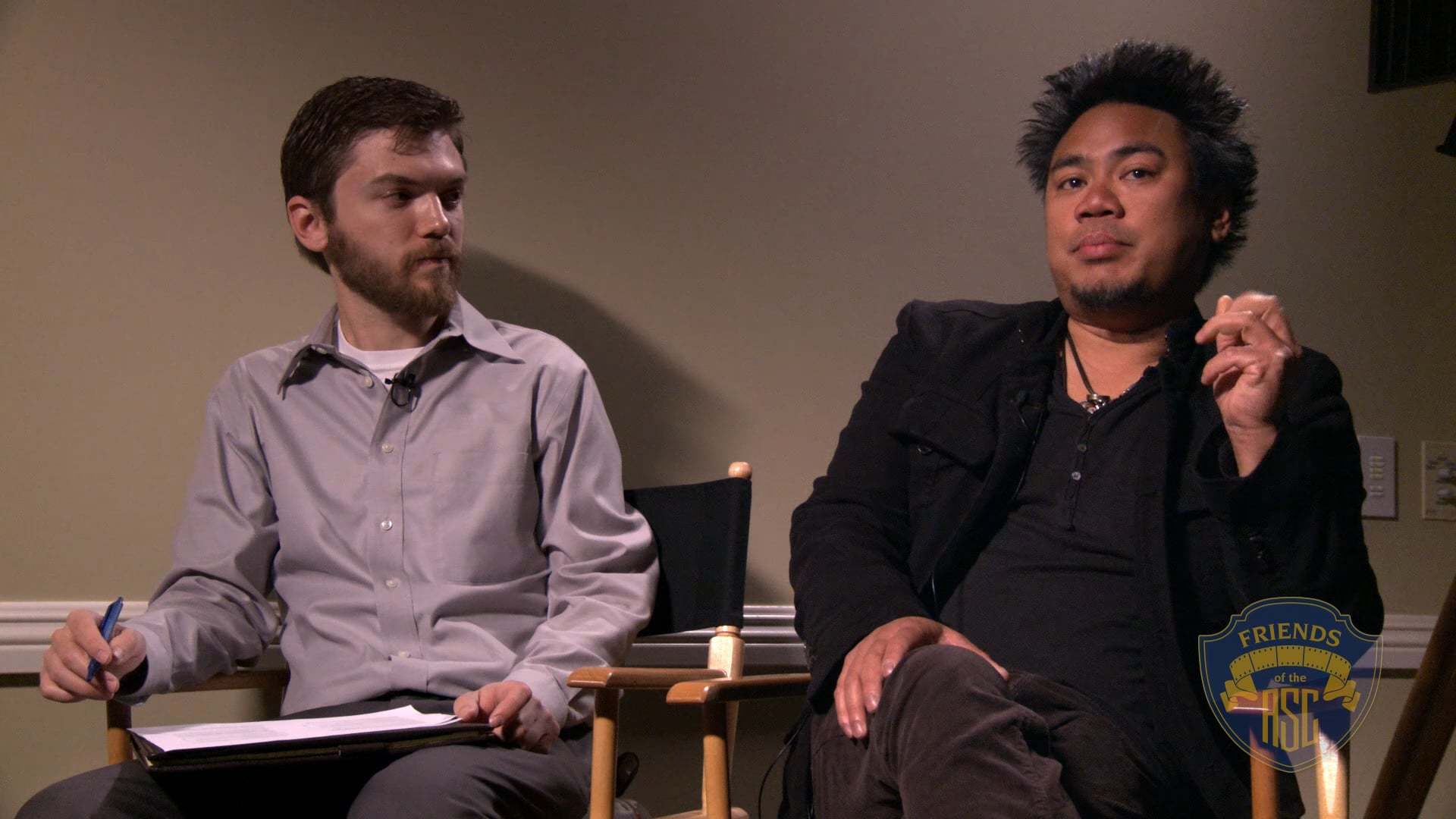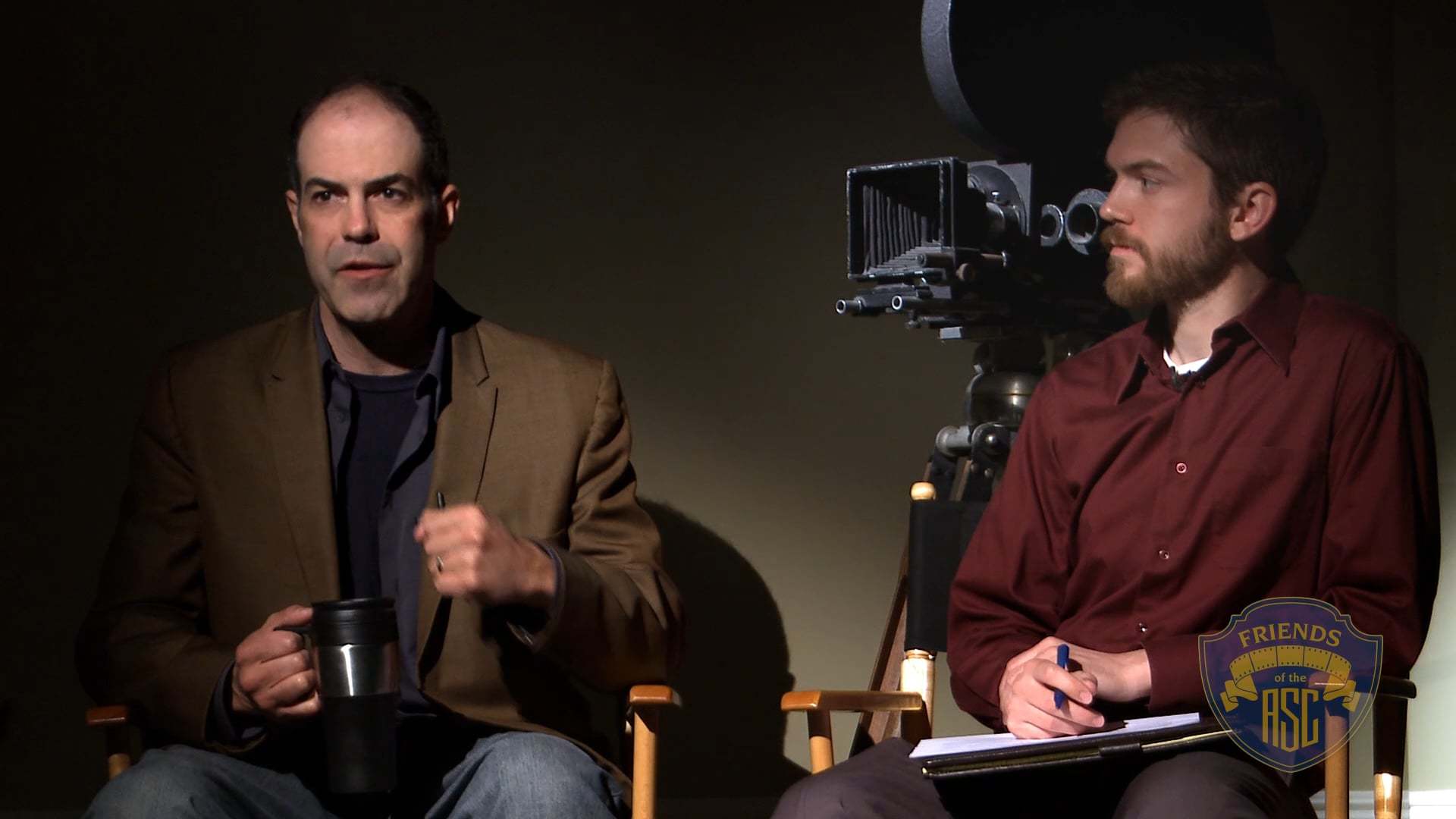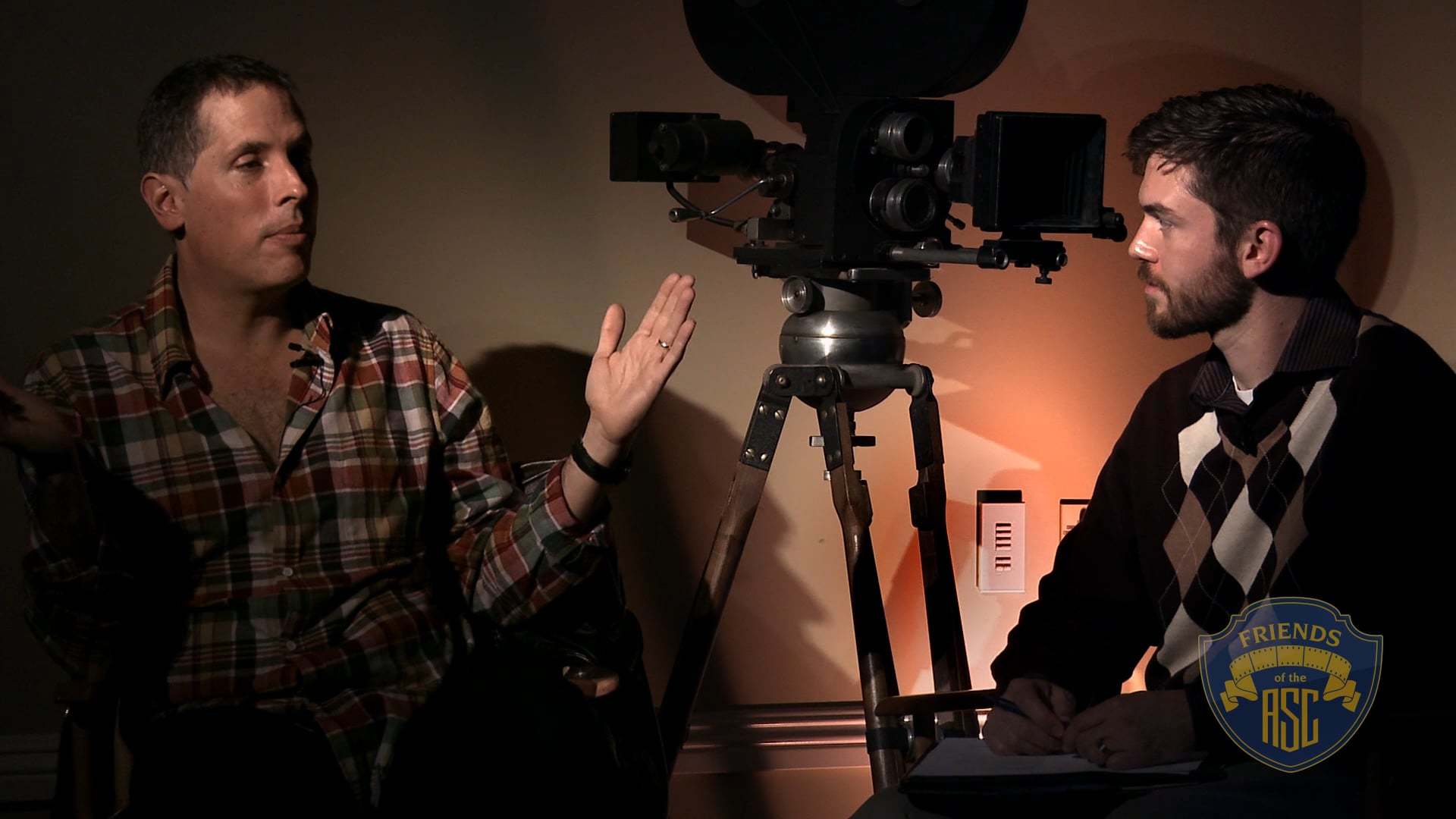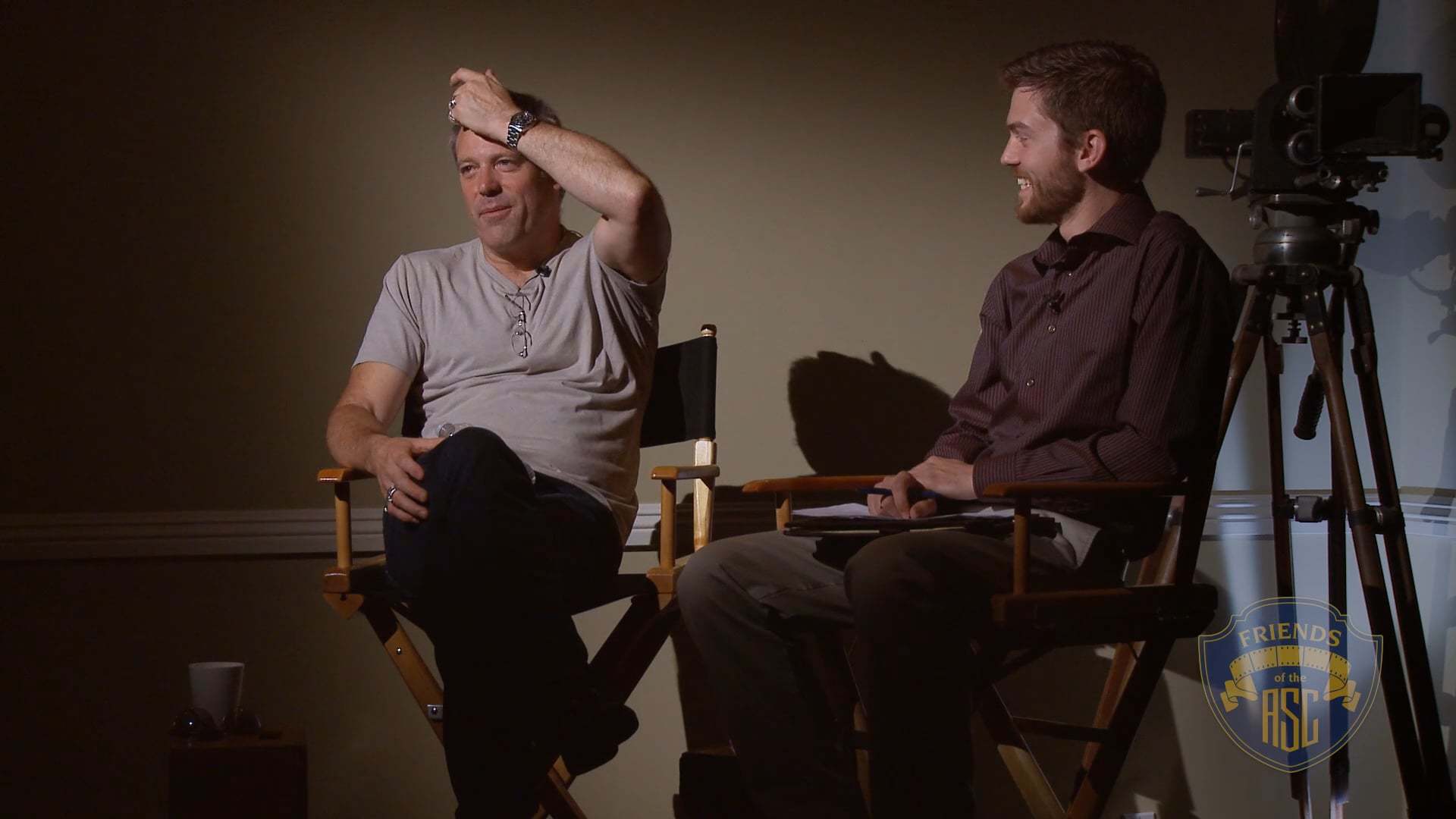
ASC Breakfast Club 2011 Video Collection
In-depth live interviews at the ASC clubhouse with ASC members Dean Cundey, Matthew Libatique, Christopher Manley, Rodrigo Prieto, and Wally Pfister, followed by a question-and-answer session with the audience.
These videos are exclusive to Friends of the ASC.
2011 marked the inaugural year of the ASC Breakfast Club, where ASC Members are invited to speak in front of a small audience at the historic clubhouse, to share their inspirations and work experiences as cinematographers. An in-depth interview, conducted by American Cinematographer Associate Editor Jon Witmer, is followed by a question-and-answer session with the audience.
2011 speakers were: Dean Cundey, Matthew Libatique, Christopher Manley, Rodrigo Prieto and Wally Pfister.
Previous Collections
2020 | 2019 | 2018 | 2017 | 2016 | 2015 | 2014 | 2013 | 2012 | 2011

Dean Cundey, ASC reveals how his early interest in production design evolved into his passion for cinematography, and he pulls back the curtain on the technical tricks employed for such groundbreaking films as Who Framed Roger Rabbit? and Jurassic Park.
Referenced Clips: Who Framed Roger Rabbit?, dvd chapter 8 (AC July 1988); Back to the Future Part II, dvd chapter 7 (AC Dec. 1989); Jurassic Park, dvd chapter 17 (AC June 1993).
Growing up in Altadena, Calif., Dean Cundey, ASC developed an early interest in production design before deciding to pursue a career as a cinematographer. He attended film school at the University of California, Los Angeles, and he worked on several low-budget films before notching a cinematography credit on Halloween in 1978. Cundey’s other credits include Big Trouble in Little China, Who Framed Roger Rabbit?, the Back to the Future trilogy, Jurassic Park and Apollo 13.

Libatique discusses his impetus to become a cinematographer, how he approaches lighting an environment, ways to gain an actor's trust, the importance of visual references and how different directors approach working with multiple cameras.
Referenced Clips: Requiem for a Dream, dvd chapter 16, 00:34:09 – 00:36:06 (Director's Cut), AC Oct. 2000); Inside Man, dvd chapter 13, 01:20:00 – 01:24:17 (2007 DVD), AC April 2006.
New York native Matthew Libatique, ASC earned his bachelor’s degree from California State University, Fullerton and then went on to receive his master’s in cinematography from the American Film Institute. His cinematography career began in music videos, which soon propelled him into features. His credits include Pi, Requiem for a Dream, The Fountain, Everything is Illuminated, Iron Man and Black Swan.

Manley talks about his film school days, how he learned early on that the role of cinematographer suited him well, creating distinct looks for the exterior 'locations' and for the sound stage based control room for the television series, Threat Matrix, lighting an episode of CSI:NY which takes place primarily in an underground cave, shot at the Bronson caves in Los Angeles, the series Mad Men, including his collaborations with the production designer, the aesthetics and production considerations of using long takes, and how the show uses filmmaking techniques from the fifties and sixties, his favorite key light, and advice on getting started and working with digital cameras.
Born in Philadelphia, Pa., Chris Manley, ASC’s first foray into the film industry was as a projectionist. He received his bachelor’s in film and media studies from Temple University, and his master’s in cinematography from the American Film Institute. His professional career began as an electrician and then gaffer, and his credits as cinematographer include the features Dahmer and Gracieand the series Threat Matrix, CSI: NY and Mad Men.

Prieto discusses his early artistic inspirations, first forays behind the camera, and his journey through film school and into the professional industry, his collaboration with director Alejandro González Iñárritu, selecting lights and lenses, the importance of color, and the challenges of designing camera moves, referencing photos while establishing the look of a movie, working with storyboards, varying lenses and film stocks to create subtle effects, and the joys and challenges of camera operating, director Ang Lee’s working methods, and what it means to light for dramatic content as well as dramatic impact, and his lighting and exposure approach to a day-for-night scene.
Rodrigo Prieto, ASC, AMC was born and raised in Mexico City, where he began making 8mm monster movies when he was only 10 years old. Later, he became an assistant in a still-photography studio before graduating from the Centro de Capacitación Cinemtográfica. His credits include Amores Perros, Frida, 8 Mile, 25th Hour, Alexander, Brokeback Mountain, Broken Embraces, State of Play, Biutiful and Argo.

Pfister discusses his background as a news and documentary cameraman, working as a camera operator, his love of IMAX and his approach to shooting and lighting the IMAX sequences from The Dark Knight, and demonstrates framing from the IMAX footage of The Dark Knight. He also discusses a few of the lighting challenges, his working relationship with colorist David Orr and post workflow, the creative process behind working with director Christopher Nolan to develop the look of a film, as well as their visual collaboration on the set, his thoughts about how digital affects interactions on the set, his experiences relating to the costs involved in shooting digital on big-budget films, and collaborating with Nolan on Memento, as well as his experiences with anamorphic lenses.
- Interview
- Memento
- The Dark Knight and IMAX
- Aspect ratio in The Dark Knight
- Inception
- Post Workflow
- Breaking Down the Script
- Digital
- Costs of Digital
Born in Irvington, NY, Wally Pfister, ASC grew up shooting 8mm home movies. He later worked as a production assistant at a local TV station in Maryland before being hired to work on the HBO miniseries Tanner ’88 as a second-unit cameraman. He went on to attend the American Film Institute, and since then has shot such features as Memento, Insomnia, Laurel Canyon, The Italian Job, Batman Begins, The Dark Knight, Inception and Moneyball.






